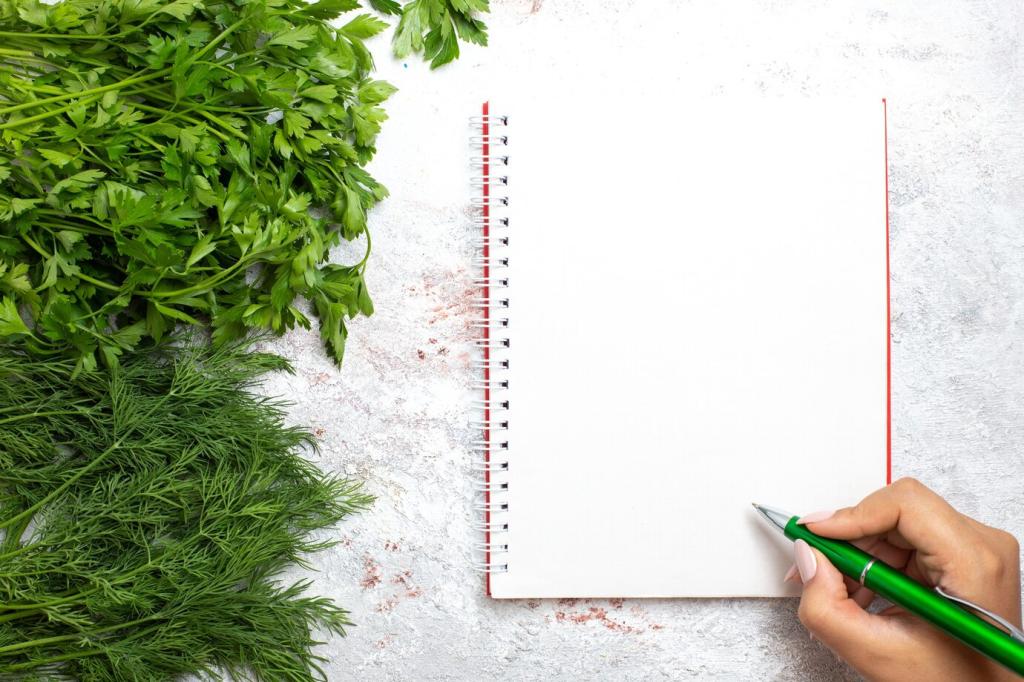
Chosen Theme: Water Conservation Techniques for Landscapes
Welcome to a greener way of designing and caring for your outdoor spaces. Our focus today is Water Conservation Techniques for Landscapes—practical, beautiful strategies that save water, money, and wildlife habitat while keeping your yard thriving. Subscribe and share your goals so we can grow this water-wise community together.
Start With a Water Budget and Site Reading
Sandy soils drain quickly, clay holds water, and loam is the sweet spot. Try a simple infiltration test with a coffee can, then adjust watering depth and frequency accordingly. Share your results to inspire neighbors to measure, not guess.
Start With a Water Budget and Site Reading
Hot reflective walls, breezy corners, and shaded beds will thirst differently. Group plants by light and wind exposure to avoid overwatering. Comment with your trickiest microclimate, and we’ll help you fine-tune a water-smart plan.


Irrigation Technology That Works With Nature
Drip vs. Sprinklers
Drip irrigation targets roots with minimal evaporation and overspray, often cutting water use significantly compared to traditional spray heads. Tell us which areas you plan to convert first, and we’ll share layout tips for even coverage.
Smart Controllers and ET-Based Scheduling
Weather-sensing controllers adjust run times based on rainfall, temperature, and evapotranspiration. They prevent watering after storms and during cool spells. Subscribe for a step-by-step guide to pairing sensors with zone-specific programs.
Cycle-and-Soak Programming
Heavy clay? Break watering into short cycles with rest periods so water sinks in rather than runs off. Try three short cycles instead of one long one. Report your before-and-after run-off observations to help others learn.
Planting for Thirst: Native, Drought-Tolerant, and Hydrozones
Hydrozoning for Precision
Create high-, moderate-, and low-water zones so each area receives exactly what it needs. Place lawn or edibles in high-use zones and natives in low-use zones. Share a sketch of your zones for feedback from our readers.
Swap Thirsty Turf for Climate-Ready Plants
Replace portions of lawn with native grasses, succulents, and shrubs that thrive with less water. One reader, Maya, reduced summer irrigation drastically after introducing native sages and yarrow. Tell us your first swap candidate.
Establishment Period Matters
Even drought-tolerant plants need consistent water while roots establish, usually the first one to two seasons. After that, reduce frequency. Comment with your planting dates, and we’ll help you taper responsibly without stressing plants.
Soil Health and Mulch: The Unsung Water Savers
Incorporating compost increases soil organic matter, improving structure and moisture retention. Your plants will sip rather than gulp. Share how you compost—bin, trench, or purchased—and we’ll suggest application rates for your beds.
Soil Health and Mulch: The Unsung Water Savers
Apply two to four inches of organic mulch to shade soil and slow evaporation. Keep mulch away from trunks and stems. Post a photo of your mulch choice—wood chips, shredded leaves, or gravel—and compare temperature differences.
Harvest What Falls: Rain and Graywater Reuse
Rain Gardens, Swales, and Contour
Shape the land to slow, spread, and sink rainfall into planting areas. A neighbor’s swale turned a soggy path into a flowering habitat. Share your slope challenges, and we’ll brainstorm contour solutions that keep water on-site.
Barrels, Cisterns, and First-Flush Diverters
Connect downspouts to storage with screens to keep debris out. Use a first-flush diverter to improve water quality. Comment with your roof size, and we’ll estimate potential capture and suggest safe overflow routes.
Laundry-to-Landscape Graywater
Redirect washing machine water to fruit trees or shrubs using approved methods and detergents. Always follow local codes. Ask questions about routing and plant choices, and share your setup plans for community tips.
Maintenance, Monitoring, and Momentum
Monthly walkthroughs catch clogged emitters, broken heads, and valve leaks before they waste thousands of gallons. Challenge yourself: schedule a 15-minute inspection and post your findings to motivate fellow readers.


Maintenance, Monitoring, and Momentum
Use soil moisture meters, mulch temperature checks, and meter reads to guide decisions. Celebrate small wins—like skipping a cycle after rain. Share your favorite metric and how it shaped your watering schedule this week.
